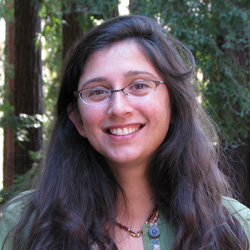
LONG BEACH, Calif. — Astronomers have found tentative traces of a precursor chemical to the building blocks of life near a star-forming region about 1,000 light-years from Earth.
The signal from the molecule, hydroxylamine, which is made up of atoms of nitrogen, hydrogen and oxygen, still needs to be verified. But, if confirmed, it would mean scientists had found a chemical that could potentially seed life on other worlds, and may have played a role in life's origin on our home planet 3.7 billion years ago.
The findings were presented Jan. 9 at the 221st annual meeting of the American Astronomical Society.
"It's very exciting," said Stefanie Milam, an astrochemist at NASA Goddard Space Flight Center in Greenbelt, Md., who was not involved in the study. If the findings can be verified, "this will be the first detection of this new molecule. It gives us a lot of hope for prebiotic chemistry in this particular region."
Some astronomers think that the ingredients for life are formed in cold, gas-, dust- and plasma-filled interstellar clouds. Comets, asteroids and meteors forming in these clouds bear such chemicals, and as they continually bombard planets, they could have deposited the chemicals on Earth or other worlds, said Anthony Remijan, an astrochemist at the National Radio Astronomy Observatory in Charlottesville, Va., who led the research effort. [7 Theories on the Origin of Life]
So while life may have emerged from hydrothermal vents on Earth — a theory that many scientists support — the molecules that eventually transformed into the earliest life forms had to come from somewhere, and that "somewhere" may have been space.
To test this theory, astronomers look for the chemical fingerprints of simple, inorganic compounds forming in interstellar clouds. These compounds aren't life or even carbon-based, but they can react with other molecules to form some of the building blocks of life, such as amino acids or the nucleotides that make up DNA. In recent years, scientists have found several different prebiotic molecules in space, said Brett McGuire, doctoral candidate in chemistry and chemical engineering at the California Institute of Technology.
Breaking space news, the latest updates on rocket launches, skywatching events and more!
In the hunt for these molecules, Remijan and colleagues scanned a star-forming region of the Milky Way called L1157-B1 using the Combined Array for Research in Millimeter-wave Astronomy (CARMA).
They found a very weak signal of hydroxylamine, which makes sense since, inside L1157-B1, a violent gas jet is slamming into the interstellar medium; the shock from this gas outflow would be sufficient force to trigger these chemical reactions in the otherwise frigid depths of an interstellar cloud. The result: hydroxylamine. In turn, hydroxylamine could react with other compounds, such as acetic acid, to form amino acids that could be dumped onto other worlds during space-rock collisions.
"We have some very preliminary evidence of its detection, a very weak signal that kind of looks like a line," McGuire told LiveScience.
The signal is extremely faint and doesn't definitively confirm the presence of hydroxylamine. But the signal does seem to come from the right region, McGuire said. The findings are exciting, but they are not yet a definitive chemical signature of hydroxylamine, Milam told LiveScience. "Every molecule has a fingerprint, and basically what he's presented is the thumb print. So we need all the other fingers to confirm that this is the actual molecule."
To confirm the finding, Remijan's team will keep probing the star-forming region for more signals that could confirm what they're seeing isn't coming from some other chemicals, Milam said.
This story was provided by LiveScience, a sister site to SPACE.com. Follow LiveScience on Twitter @livescience. We're also on Facebook &Google+.

Tia is the assistant managing editor and was previously a senior writer for Live Science, a Space.com sister site. Her work has appeared in Scientific American, Wired.com and other outlets. She holds a master's degree in bioengineering from the University of Washington, a graduate certificate in science writing from UC Santa Cruz and a bachelor's degree in mechanical engineering from the University of Texas at Austin. Tia was part of a team at the Milwaukee Journal Sentinel that published the Empty Cradles series on preterm births, which won multiple awards, including the 2012 Casey Medal for Meritorious Journalism.

